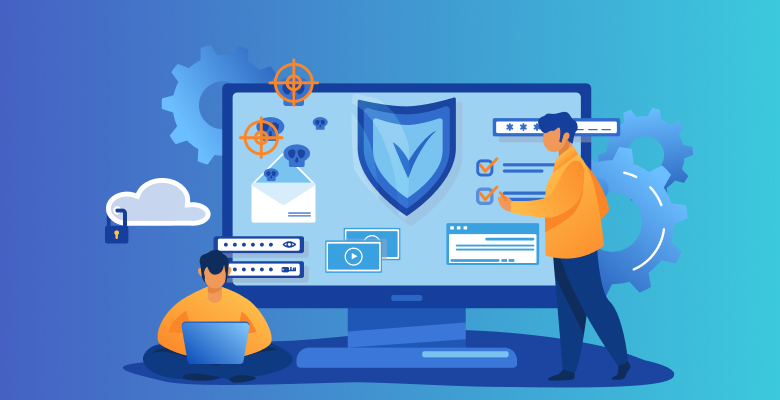7 Node.js Security Best Practices for Combating Cyber Threats

Node.js is a prevalent open-source, cross-platform JavaScript run-time environment used to build extensive apps in all kinds of exciting settings. It directly impacts the integrity of your applications and the information they handle regularly.
This article contains 7 Node.js security best practices that you must keep in mind. Check them out, and make sure you use them every time you build something using Node!
7 Node.js Security Best Practices
1) Use TLS in Your App
Transport Layer Security (TLS) encryption keeps data between your server and its clients private. Your app can use either a self-signed certificate or certificates from a third-party Certificate Authority (CA).
istanbul escort
These setups protect against eavesdropping and tampering. But using certificates signed by an external CA gives your users more peace of mind that they’re connecting to your website not a malicious hacker’s spoofed version.
When building your Node.js app, make sure that you’re using a TLS library. The libraries like OpenSSL or Secure Transport, and use solid ciphers and protocols like:
- AES,
- SHA-2, and
- PFS (Perfect Forward Secrecy).
If you’re using an external CA for TLS certificates, verify that their certificate is still valid before deploying it in production. Using TLS is one of the top-rated node.js security best practices and must be implemented cautiously without fail.
2) Validate Parameters

Source: Adam
As a web application grows in complexity, hackers have more opportunities to sneak in and wreak havoc. Validate your parameters before processing them with req.param() or res.locals to prevent unwanted input from being processed. While developing a Node.js app, you must also validate user inputs. It is essential to avoid undesirable information from being processed.
Suppose if a user enters injection-based attacks, then the app will throw an error and return a response with an error message Bad Request which can save you from potential attacks on the server. It will help you prevent any unwanted input from being processed by the application, which may lead to severe consequences.
When hiring node.js developers ensure detailed discussion on the significance of validating parameters. It gives you a first-hand idea of their security practices.
3) Limit Access Through HTTP headers
Setting HTTP headers limits access to your API. It is good practice to prevent unnecessary load on your server and track API usage over time (which can be valuable data when planning future features). Set two HTTP headers at their respective levels—one at the directory level and one at the file level.
Doing so at both levels will ensure that any requests from a directory or file are first filtered through your .htaccess file & then through the API key.
Alternatively, you can also add these two lines at both levels. Or, if you want to set an HTTP header for every directory or file in your application, replace public with (an empty string). It will prevent anyone without access to your server from accessing your files.
In simple words, if someone tries to access your file without an API key, they’ll receive a 403 error. If they have an API key, they’ll be able to access your file and its data. So, you will have greater security of files and data.
4) Limit Exposure with Server-Side Logic
If your Node.js app has a web interface, limit exposure of that interface through server-side logic or an API key / secret key combination (you can also use cookies for server-side tracking). It helps protect sensitive data such as passwords and social security numbers when malicious users can sniff traffic on your network.
If possible, host public-facing web apps behind a firewall and use secure channels like HTTPS (SSL) for all requests. It ensures that none but only authorized users have access to data, whether sensitive or not. You can also use SSL to protect your API endpoints from unauthorized access.
Consider adding one secret key combination in place as soon as possible when your app doesn’t have a web interface or an API key. No data gets ever displayed on the front-end, and this method makes it compliant and keeps the data safe.
Note: The value of a database can make it worth protecting even if it doesn’t have an external interface. This process is called salting and is essential for preventing rainbow table attacks from being successful against your app.
5) Leverage OAuth/Okta or Any Other Similar Framework

Consider leveraging industry-standard single sign-on solutions like OAuth or Okta. This will help users log in with minimal friction and give them more control over their accounts. It proves helpful when building an app that interfaces with a service like Facebook, Twitter, or Google. It is another one of the best node.js security best practices
If your API is private (like many internal apps), you can use Okta Sign-On Hub for Cloud APIs. It is an easy way to add SSO capabilities without modifying your API code. These frameworks allow users don’t have to give up their credentials or create yet another account to try out your product. The primary significance of using them is that they will help secure your app and prevent it from getting hacked easily.
Ensure that all requests are made over HTTPS and that any access tokens are secured by encryption and never persisted on disk when you decide to build in OAuth support yourself,
Thus, users can enjoy a seamless experience across apps and services without creating multiple accounts or storing their credentials in numerous places. And your app can be more secure by leveraging industry-standard solutions. These standards have been battle-tested over time and are constantly being improved upon.
6) Upgrade Security with Bcrypt/Scrypt
Use bcrypt or scrypt in conjunction with a hashing algorithm like SHA256 or SHA512 to secure passwords. Any of these combinations is an excellent choice for securing user passwords:
- bcrypt + shasum,
- scrypt + shasum,
- bcrypt + shasox,
- scrypt + shasox…etc..
No matter how fast a password cracker gets (and they always get faster), adding iterations makes it exponentially slower than if you hadn’t used any. Additionally, limiting the number of log-in attempts helps mitigate brute force attacks and, in some cases, may even prevent them entirely.
It also means that once an attacker has obtained your database, they will not be able to quickly recover user passwords as there is too much work involved in cracking them. It provides an additional protective layer against unauthorized access to user accounts on your site or service.
Moreover, with 2FA authentication, it becomes practically impossible for a hacker to gain access without your password and an OTP (one-time password) that is only valid for a short period. It means that even if they have your password, they will not be able to log in because they do not have access to your OTP code which changes every few seconds, minutes, or hours.
7) Keep an Updated Version of Node, NPM, and all Modules Installed on your Server
To keep your node.js application secure, always use updated versions of Node, npm, and all modules installed on your server/application platform. It is recommended that you develop locally using a version manager like nvm or n (Mac users will have to install it via brew install n).
It ensures easy switching between versions of Node and npm when needed without affecting your production environment. This will prove helpful when an update causes issues with existing applications running in production.
Moreover, running old versions of Node and npm can expose your application to vulnerabilities that have been patched in newer versions. For example, a few months ago, a vulnerability was discovered in npm’s tar implementation. It allows an attacker to write files outside of where they should be (it has since been patched).
Node.js development company can assist you in building an app with the latest versions of Node, npm, and all other modules enhancing the security aspects of the project.
Wrapping Up
Validating parameters and using TLS are proven effective strategies against cybersecurity threats. Similarly, leveraging ready-made packages like OAuth/Okta, Bcrypt, Scrypt, offers extended security to your app.
That was all about the standard Node.js security best practices you need to follow.
I hope it helps you, and if it does, please share it with your friends on social media!
Thank You!
Also Read:




